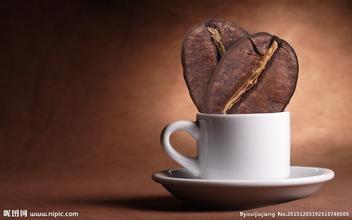Small details about the filter cup that you overlooked.
Big coffees who are keen on making hand-brewed coffee all have one or two sets of coffee utensils that are easy to use, and these seemingly obvious items actually contain a lot of interesting little "secrets". Like a filter cup.
There are many kinds of filter cups, and the one in your hand may be Melitta,Kalita,KONO. Either way, each has its own characteristics, so how will these unique designs affect the taste of coffee?
In terms of material, the filter cup is made of resin, ceramic and copper.
Most of the filter cups of resin are transparent, so it is easy to see the dripping state of coffee liquid during coffee extraction through the filter cup, and it is light and easy to carry.
The ceramic filter cup has strong heat preservation, but it also dissipates heat quickly. So you need to warm the cup with hot water before making coffee. The ceramic filter cup effectively ensures the constant water temperature in the process of making coffee, which is beneficial for the coffee powder to extract a balanced taste at the same water temperature.
Copper filter cups are very textured in appearance, and a considerable number of people are happy to collect copper filter cups, and their thermal insulation and thermal conductivity are excellent. But if you don't take good care of it, the remaining water droplets will oxidize the copper into black spots.
In addition to the different materials, the internal grooves (Rib) of the filter cup are also slightly different. First of all, we need to know that the function of the groove in the filter cup is to let the gas out of the gap formed by the filter paper and the groove in the process of extracting coffee, so that the gas will not break through the top of the coffee powder and lose its aroma.
When you pick up the coffee filter cup again, it is not difficult to observe and compare the Melitta single-hole filter cup with dense grooves and deep grooves, so the design facilitates the rapid discharge of gas along the grooves. All the coffee liquid flows through only one hole, and the extracted coffee is full-bodied and rich, but it is easier to soak when making lightly roasted beans.
Compared with Melitta, the three-hole filter cup grooves of Kalita are sparse and shallow. This is because the filter cup has three holes, the coffee liquid can flow out quickly and evenly, and the internal pressure of the coffee powder will not form too much pressure to make the gas break through the coffee powder. The three-hole filter cup can adjust the coffee concentration by controlling the thickness and speed of the water flow.
There is a large round hole at the bottom of the filter cup of KONO, and the groove in the filter cup extends to the bottom groove. Although the bottom filtration time is short, the coffee powder will be piled up narrow and long because of the shape of the filter cup, and the time for the water to pass through the coffee powder will be longer. The coffee extracted by KONO has a strong flavor but can still feel the softness and smoothness of the coffee.
The way you make coffee by hand varies with different utensils. When we choose a coffee filter cup, as long as we can meet the three basic conditions of filtration, ventilation and heat preservation, and understand the characteristics and functions of the apparatus, coupled with our own hard practice, we will be able to make coffee in line with our own taste.
In the world of hand-brewing coffee, any small detail will cause subtle changes in the taste of coffee, and there are too many unknowns waiting for us to explore. I like coffee, not only because of its taste, but also because it can bring me enough fun.

Important Notice :
前街咖啡 FrontStreet Coffee has moved to new addredd:
FrontStreet Coffee Address: 315,Donghua East Road,GuangZhou
Tel:020 38364473
- Prev

What are the common misunderstandings in making coffee?
I believe everyone has drunk coffee, and everyone should know something about coffee, so do you know how to make coffee? What are the misunderstandings of making coffee? Today, I will introduce to you the 12 most common mistakes in making coffee, and tell you what are the disadvantages of drinking coffee. Interested friends come and have a look. Coffee is a common drink in our daily life.
- Next

What is water treatment?
1. Bean selection: Put the harvested fruit in a water tank and soak it for about 24 hours. The ripe fruit will sink, while the immature and overripe fruit will float up and can be culled. 2, remove the pulp: use a machine to remove the peel and pulp, leaving only the coffee beans wrapped in the endocarp. At this time, there is still a layer of mucosa outside the beans. The process of washing is to wash this.
Related
- Beginners will see the "Coffee pull flower" guide!
- What is the difference between ice blog purified milk and ordinary milk coffee?
- Why is the Philippines the largest producer of crops in Liberia?
- For coffee extraction, should the fine powder be retained?
- How does extracted espresso fill pressed powder? How much strength does it take to press the powder?
- How to make jasmine cold extract coffee? Is the jasmine + latte good?
- Will this little toy really make the coffee taste better? How does Lily Drip affect coffee extraction?
- Will the action of slapping the filter cup also affect coffee extraction?
- What's the difference between powder-to-water ratio and powder-to-liquid ratio?
- What is the Ethiopian local species? What does it have to do with Heirloom native species?

